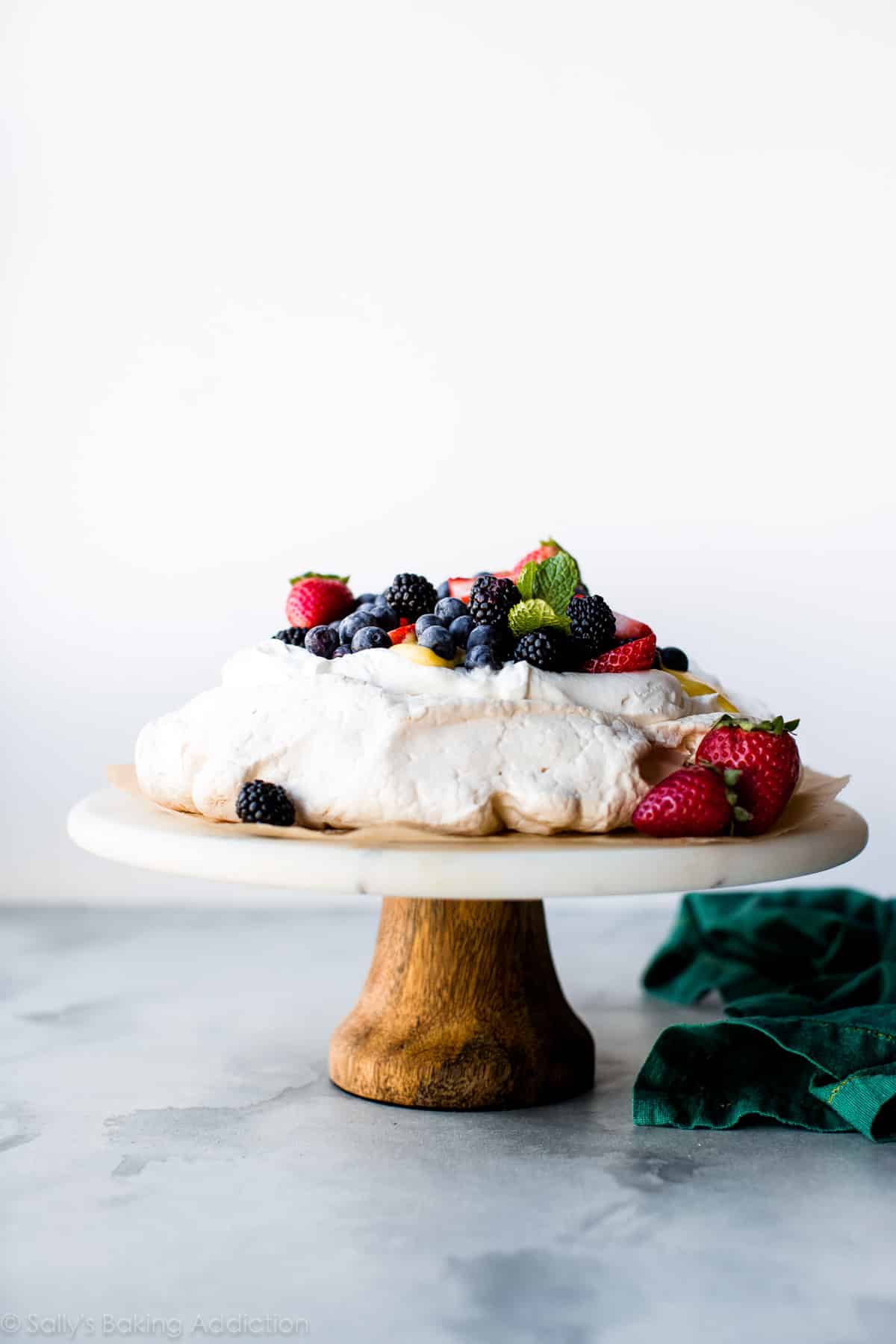
Another fresh and exciting recipe for you!
What is pavlova? Pavlova is a dessert popular in New Zealand and Australia. It’s not as common here in the states, but I hope to help change that! A texture lover’s dream come true, pavlova is made from egg whites that are slowly baked in a relatively cool oven. The egg whites take on a chewy-crisp texture on top, a soft marshmallow texture inside, and a crunchy crisp texture around the edges. That’s three completely different textures in one single bite. The crunchy edges are just like meringue cookies.
Pavlova loves to be dressed up with assorted toppings, mainly fresh whipped cream and piles of fresh fruit. Naturally gluten free, pavlova is light, sweet, and screams warm weather favorite. Happy spring, my friends, we’re making PAVLOVA!!
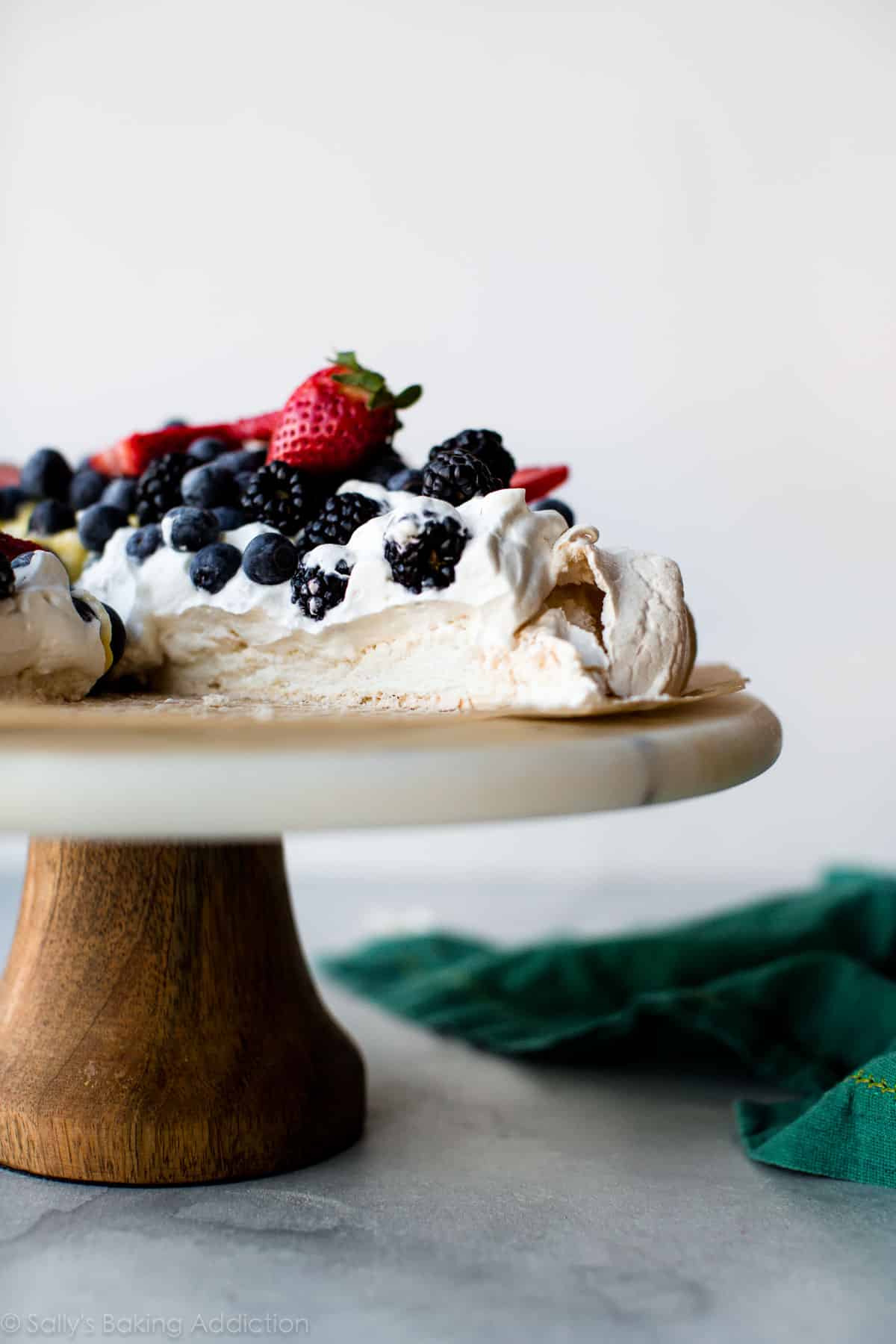
Video Tutorial: How to Make Pavlova
To obtain the unique pavlova texture, you must adhere to an exact recipe. While it’s fun to play around with ingredients, pavlova is not the time to stray from what’s listed. It’s picky, but picky doesn’t mean difficult. In fact, you only need 5 ingredients to make pavlova and I bet you have each in your kitchen right now:
- Egg whites
- Sugar
- An acid such as cream of tartar or vinegar
- Cornstarch
- Vanilla extract
Let me explain why these ingredients are used.
Pavlova Ingredients
- Egg whites – beaten into stiff peaks, egg whites are the base and volume of pavlova.
- Sugar – in addition to sweetening the dessert, sugar stabilizes the egg whites by holding them together both in the oven and as the whole pavlova cools. Without sugar, the protein molecules (science!) in egg whites will collapse. Additionally, sugar helps achieve the delightfully crisp texture. (Sugar is so much more than a sweetener in our baked goods.) Speaking of sugar, make sure that you use superfine or castor sugar. Just pulse sugar a few times in a food processor to reduce the size of the crystals.
- Acid – you can use 1/2 teaspoon of cream of tartar or 1 teaspoon white, apple cider vinegar, or even lemon juice. The pavlova will NOT taste like vinegar, I promise. The acid helps the egg whites hold onto air and, like the sugar, helps prevent the egg whites from collapsing. I tested with both and I actually prefer cream of tartar. I found that my pavlova spread a bit more when I used liquid acid.
- Cornstarch – I tested pav with and without cornstarch. I found that the center was fluffier and more marshmallow-y with cornstarch. Then I tested with 1 teaspoon cornstarch and 2 teaspoons cornstarch. I found it was a little chalky tasting with 2 teaspoons. I’m sticking to 1 teaspoon.
- Vanilla extract – purely for flavor!
(Not sponsored by any of these companies, but here’s exactly what I use.)
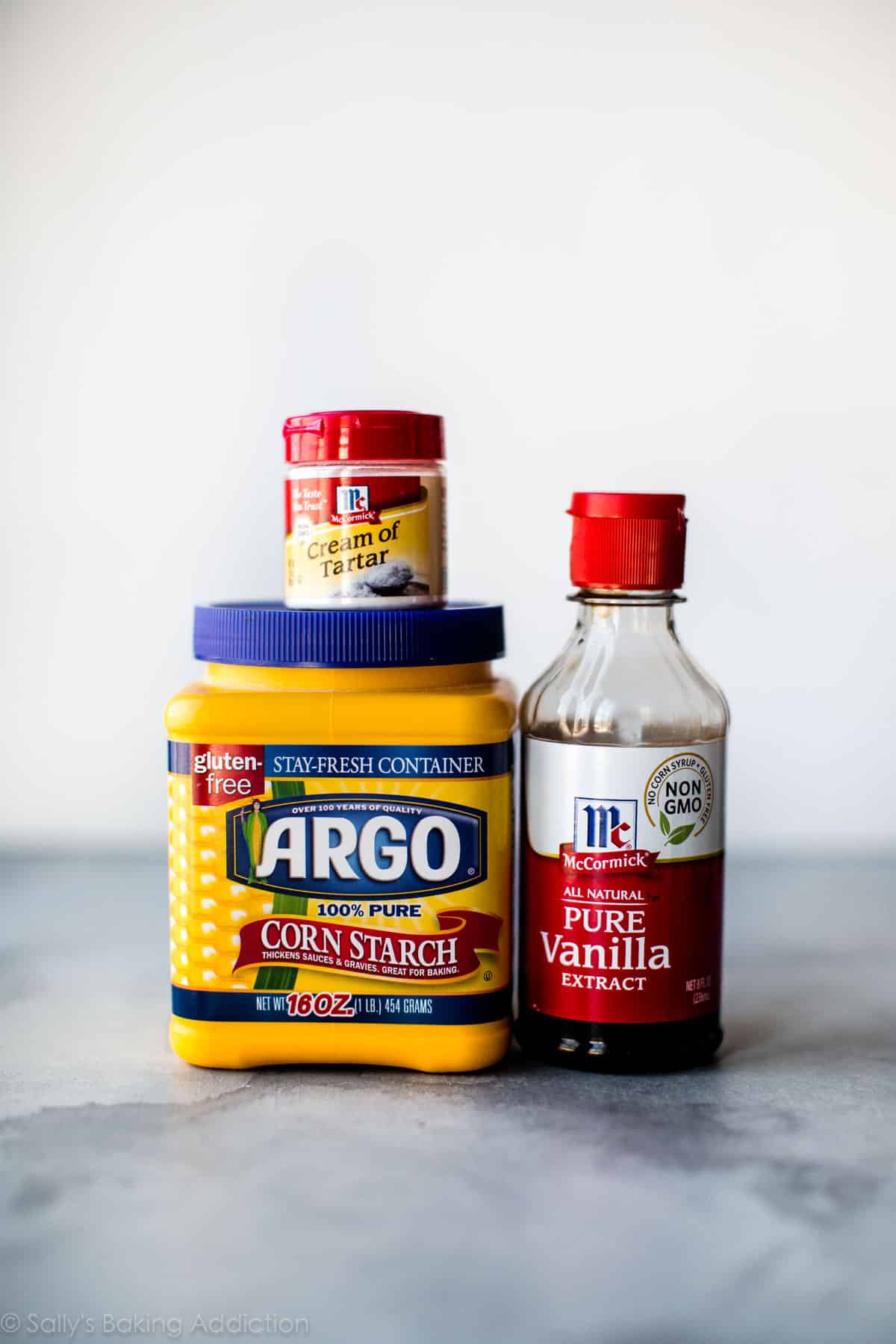
Ingredients are simple and method is effortless. There’s plenty of downtime when making pavlova. All you really have to do is watch it beat in your stand mixer then check on it in your oven. Kick your feet up!

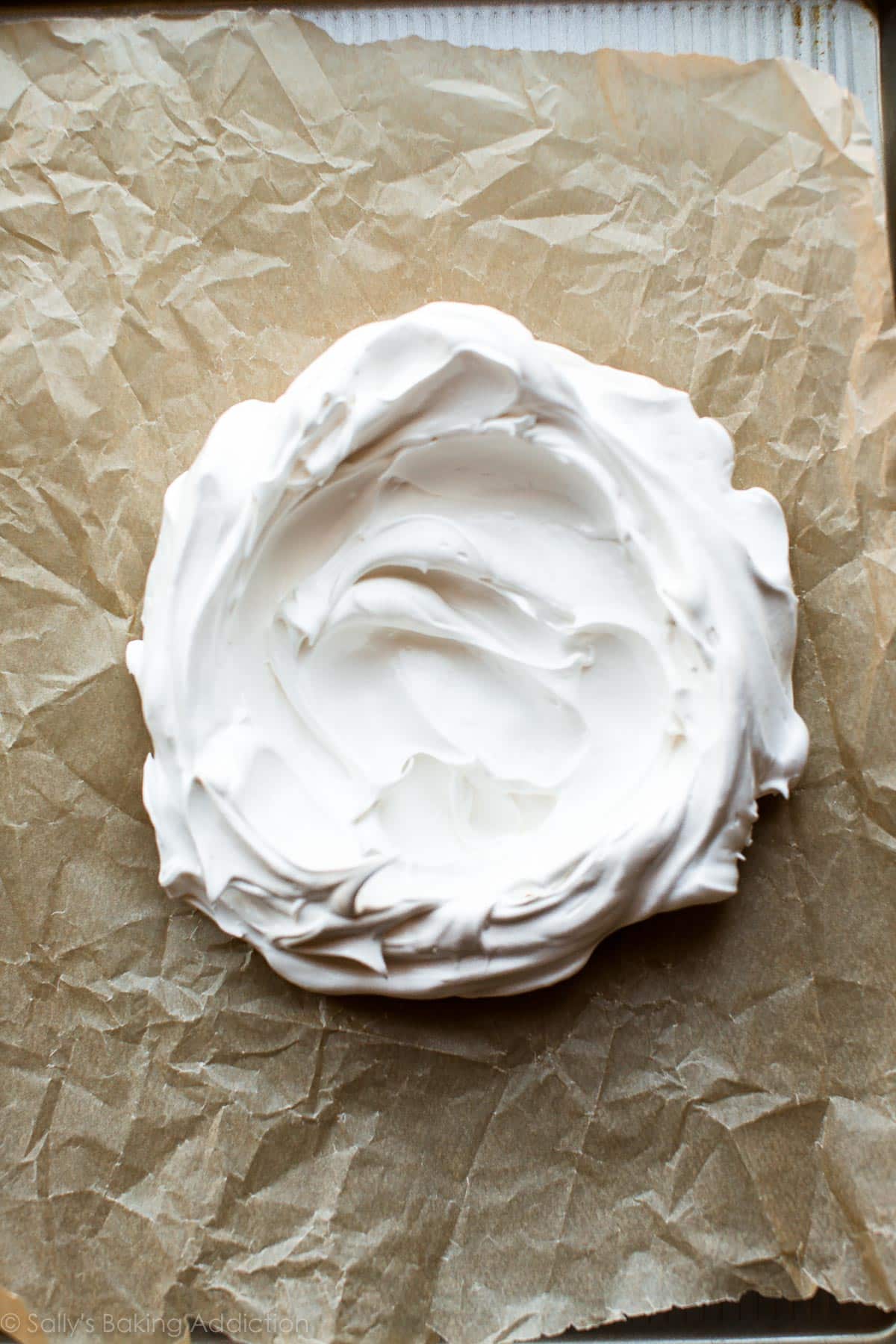
Just like our chocolate swirled meringue cookies and the meringue on our lemon meringue pie, whip the egg whites into super stiff peaks. Stiff enough that you can hold the whisk over your head and feel confident that the whipped egg whites won’t drop. 😉 Then you’ll spread the pavlova mixture onto your lined baking pan. You can use parchment paper or a silicone baking mat. Do not grease the baking pan—use a nonstick surface instead. Spread it into a circle, about 8-9 inches in diameter. You can eyeball it or trace one with a pencil. I just eyeball it. Like I did in the lemon meringue pie video, use the back of a spoon to create decorative peaks. Make sure the edges are tall and you have a nice dip in the center. That’s were we’ll pile our whipped cream and fruit!
Alternatively, you can make mini pavlovas. Here I piped the mixture into 6 mini pavlovas using Ateco 849. A piping tip isn’t necessary—you can just spoon it on. Again, make sure you leave a dip in the center to hold the toppings.
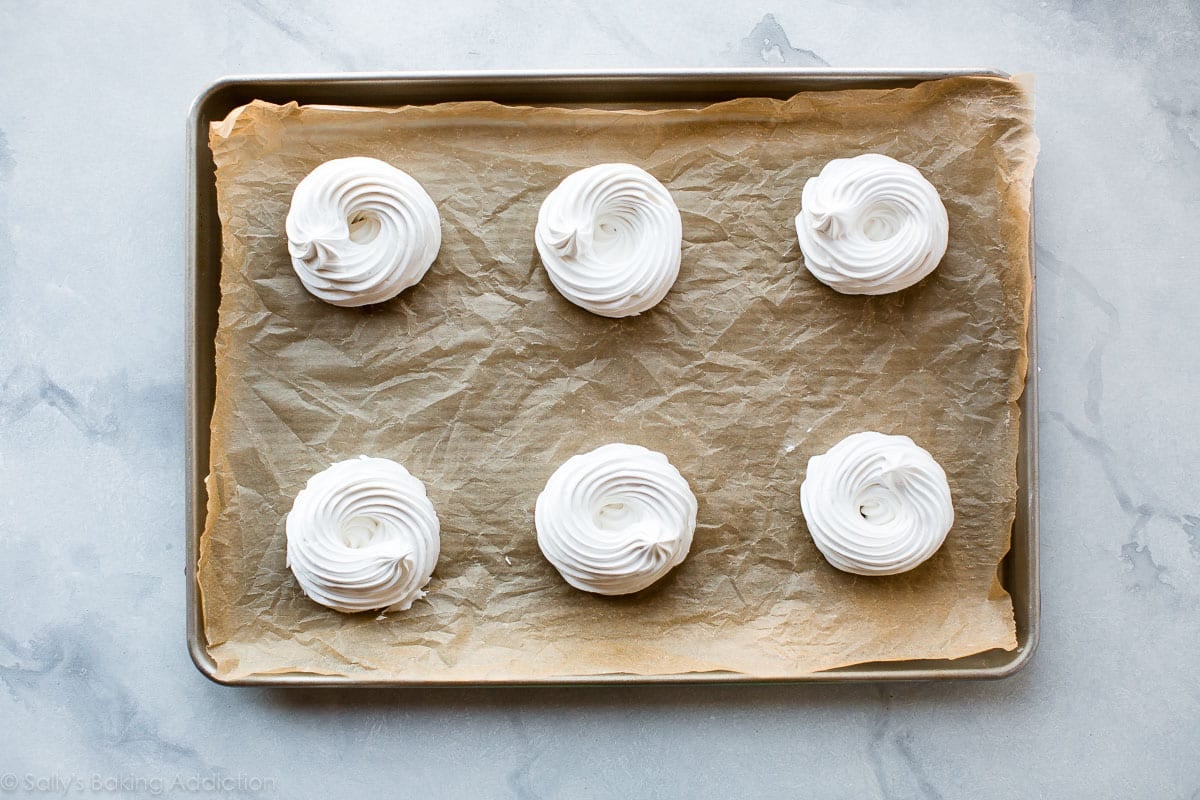
A relatively cooler oven is imperative for properly cooking your pavlova, but let’s start the pavlova at 350°F (177°C) then reduce it down to 200°F (93°C). I do this to help “set” the outer crust quickly. This trick helps reduce spread.
A properly cooked pav is pale in color. Cracks and bumps are par for the course, but the pavlova shouldn’t completely deflate. Especially if you follow the precise measurements and instructions in the recipe. You can help avoid too many cracks by cooling the pavlova in the oven. The sudden change of temperature (inside the oven to outside the oven) shocks the pavlova, so it’s best to cool inside the cooling oven.
Make sense?
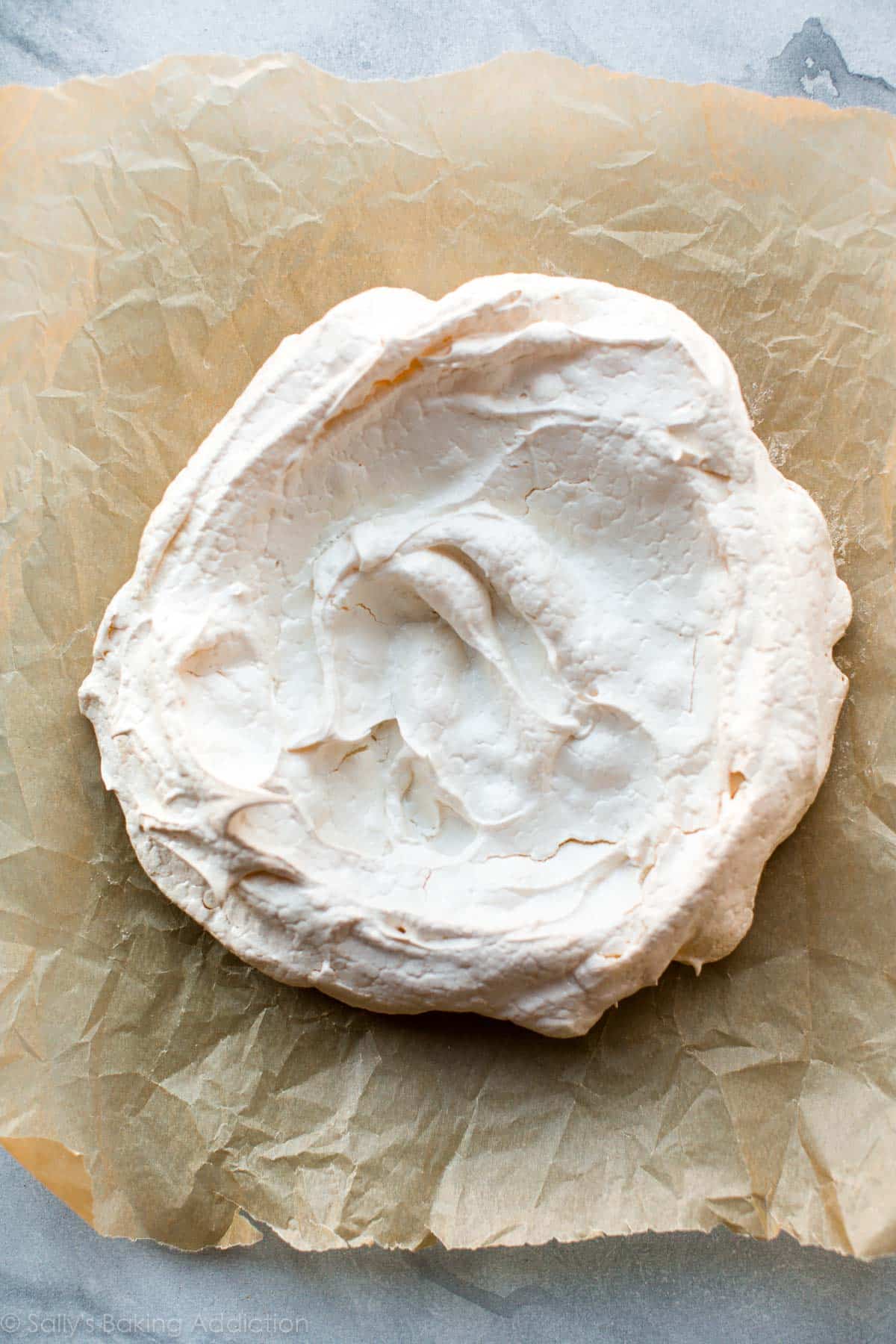
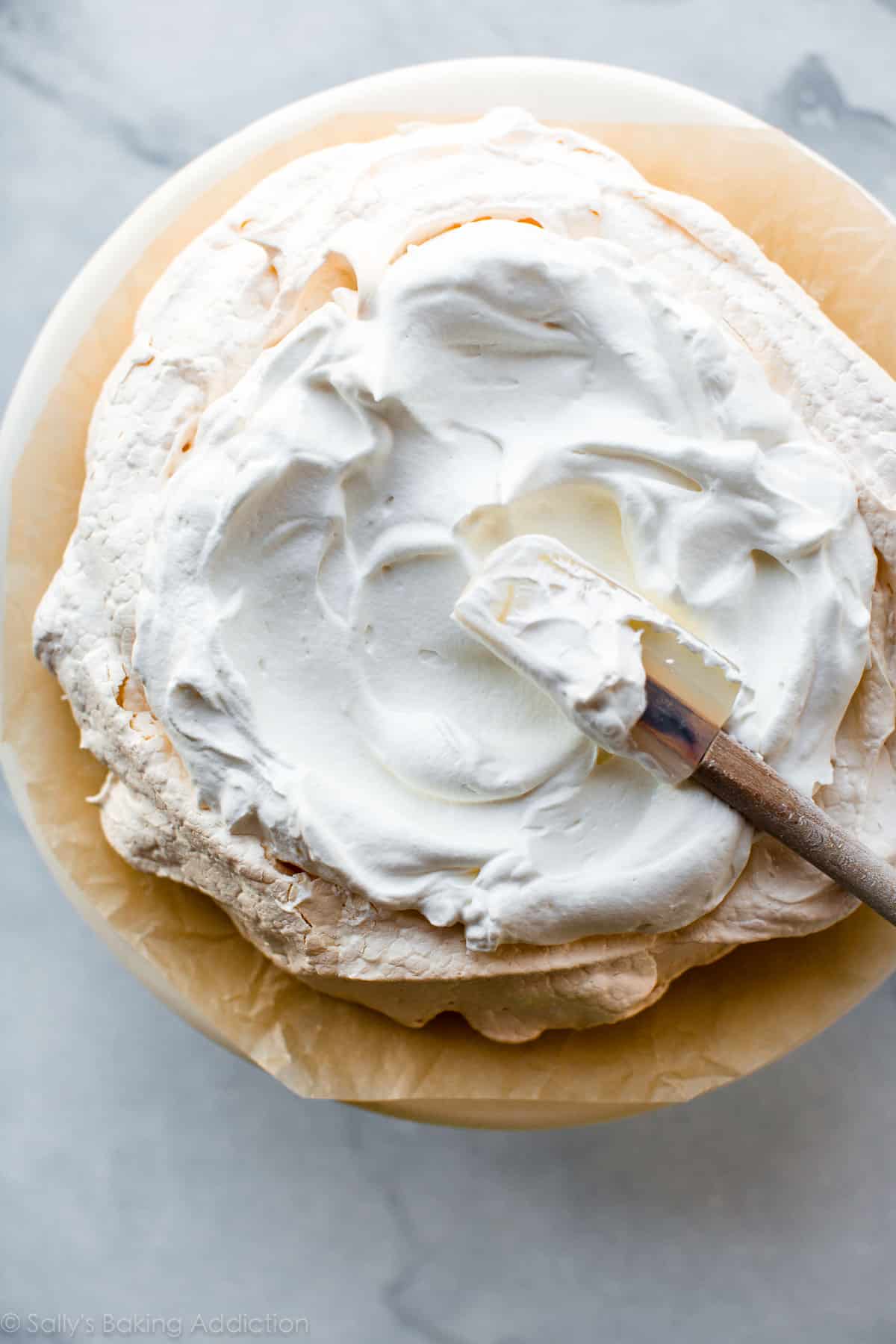

You can top your pavlova or mini pavlovas any which way, but here are some of my topping suggestions:
- Whipped cream is essential. You can get a little creative and flavor your whipped cream. Here are some fun flavored whipped creams.
- Homemade lemon curd. You’ll have exactly 4 egg yolks leftover anyway.
- A lot of fresh berries… enough to make a fruit pizza jealous!
- Edible florals and herbs
- Strawberry sauce, raspberry sauce, or blueberry sauce
- Chocolate shavings
- Seasonal fruits like mango, kiwi, passionfruit, blood oranges
No need to get artistic, just pile it all on top into a massive pavlova mountain.
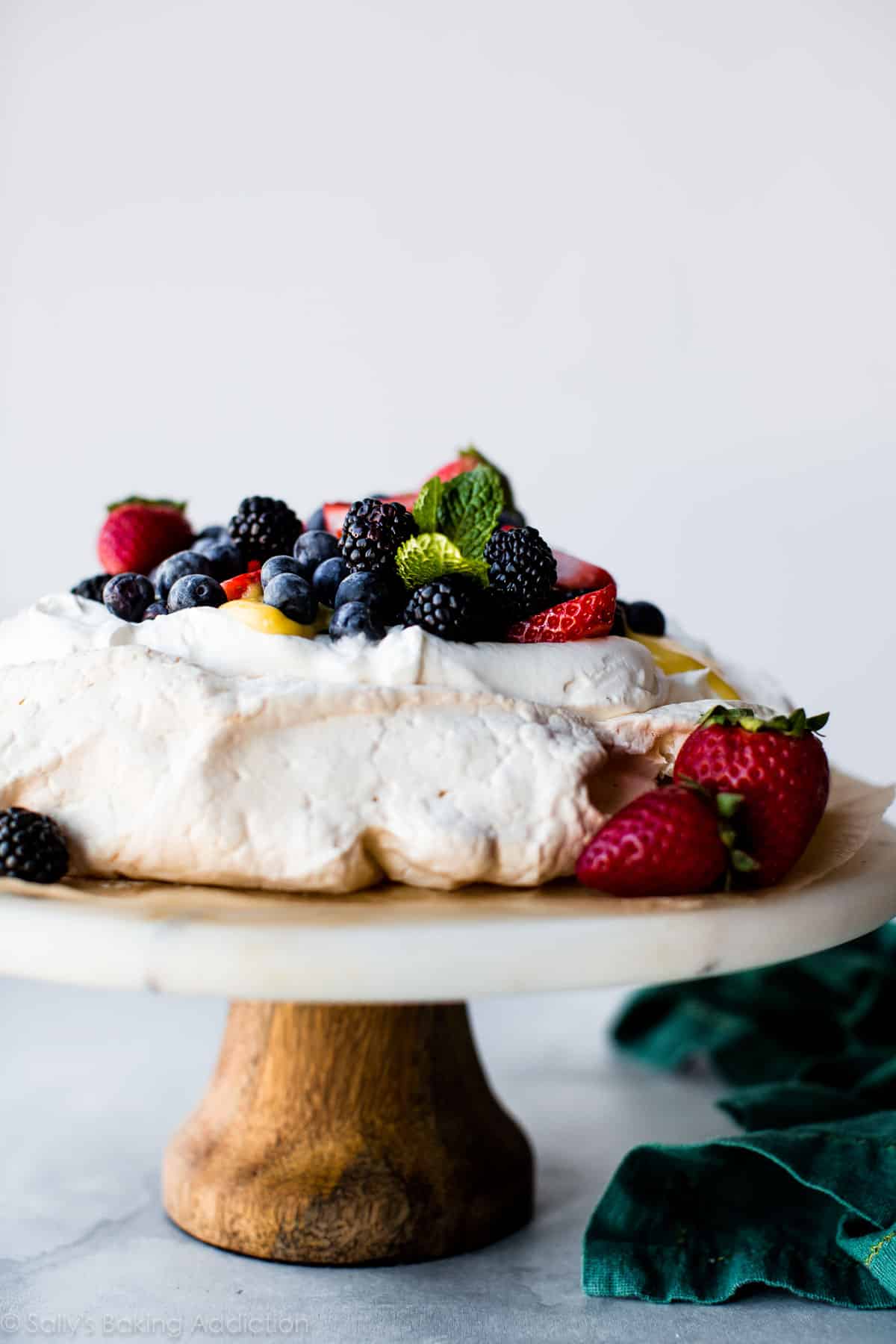
Things are bound to get a little messy when slicing, but if you cooked the pavlova long enough so that the bottom is crisp and the edges are set, it will hold a pie slice shape. This big thing serves about 8-10 people!
If you’re still on the fence about trying pavlova, might I remind you that the center tastes like marshmallows.
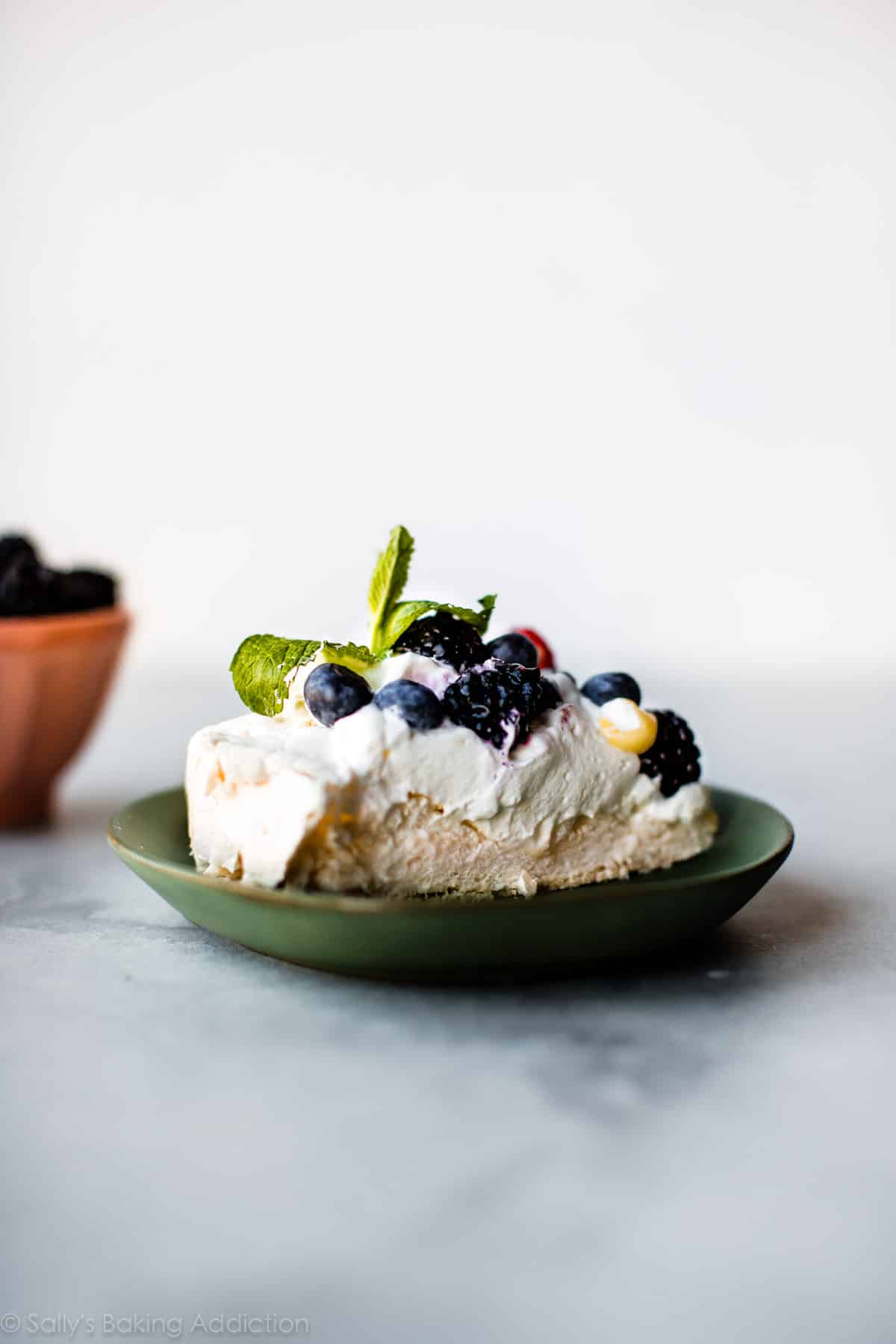
Have fun!
For more gluten-free baking inspiration, here are 40 gluten-free dessert recipes that are always a hit, including cranberry frangipane tart and flourless chocolate cake.
Print
Pavlova
- Prep Time: 20 minutes
- Cook Time: 90 minutes
- Total Time: 4 hours
- Yield: serves 8-10
- Category: Dessert
- Method: Baking
- Cuisine: New Zealand
Description
Pavlova is crisp on the edges, chewy on top, and marshmallow soft and creamy in the centers. Pile high with lemon curd, whipped cream, and fresh fruit to make a naturally delicious gluten free dessert!
Ingredients
- 4 large egg whites (use the yolks for lemon curd!)*
- 1 cup (200g) superfine sugar*
- 1 teaspoon pure vanilla extract
- 1/2 teaspoon cream of tartar*
- 1 teaspoon cornstarch
Toppings
- Homemade whipped cream, fresh fruit, strawberry topping, lemon curd, or any desired topping (see post for suggestions)
Instructions
- Preheat the oven to 350°F (177°C). Line a large baking sheet with parchment paper or a silicone baking mat. (Preliminary note: you will quickly reduce the oven to 200°F (93°C) in step 4.)
- With a handheld mixer or a stand mixer fitted with a whisk attachment, beat the egg whites on medium-high speed until soft peaks form, about 5 minutes. Add the sugar in 2 additions, beating for 30 seconds between. Once all of the sugar has been added, turn the mixer up to high speed and continue beating until glossy stiff peaks form, about 2 minutes. The peaks should be stiff enough that you can hold the whisk upright and the peaks won’t move. Add the vanilla extract and beat for 1 more minute. The peaks should still be very stiff. If not, keep on mixing on high speed. Using a rubber spatula, fold in the cream of tartar and cornstarch.
- Spread the pavlova mixture into an 8-9-inch circle (see note for mini size). You can make decorative peaks with the back of a large spoon if desired. Make sure the edges are relatively tall and there is a nice dip in the center.
- Place pavlova in the oven. As soon as you close the oven door, reduce heat to 200°F (93°C). The pavlova will stay in the oven as it cools down to 200°F (93°C). Bake until the pavlova is firm and dry, about 90 minutes total. Rotate the baking sheet if you notice some spots browning. Try to limit how many times you open the oven as the cool air will interrupt the baking.
- Turn the oven off and let the pavlova cool inside the oven. Once the pavlova is cool, you can store it covered at room temperature for up to 2 days. Or serve right away.
- Once cool, top the pavlova with whipped cream and assorted toppings. Slice and serve.
Notes
- Make Ahead Instructions: See step 5 for making the pavlova in advance. Pavlova is best enjoyed right after it’s garnished. It doesn’t freeze well.
- Special Tools (affiliate links): Electric Mixer (Handheld or Stand) | Baking Sheet | Silicone Baking Mat or Parchment Paper | Marble Cake Stand or Serving Platter
- Egg Whites: (1) Room temperature egg whites whip faster than cold egg whites. And (2) room temperature egg whites whip into a greater volume than cold egg whites. So make sure your egg whites are at room temperature before beginning.
- Sugar: Superfine sugar dissolves easier into egg whites. To avoid tasting sugar granules, pulse 1 cup granulated sugar a few times in a food processor. You now have superfine sugar to use in the recipe.
- Acid: You can use 1/2 teaspoon of cream of tartar or 1 teaspoon of white vinegar, apple cider vinegar, or lemon juice.
- Mini Pavlovas: Divide pavlova mixture up into individual portions instead of spreading into one large 8-9-inch circle. In the photos, I piped the mixture into 6 mini pavlovas using Ateco 849. A piping tip isn’t necessary—you can just spoon it on. Make sure you leave a dip in the center to hold the toppings. Bake time depends on size, see step 4 for what to look for. If making 6 mini pavlovas like I did, bake for 35-40 minutes at 200°F (93°C). Start them in a 350°F (177°C) oven, like I do in this written recipe.
- Pavlova base from reader Laurel. Thanks, Laurel!





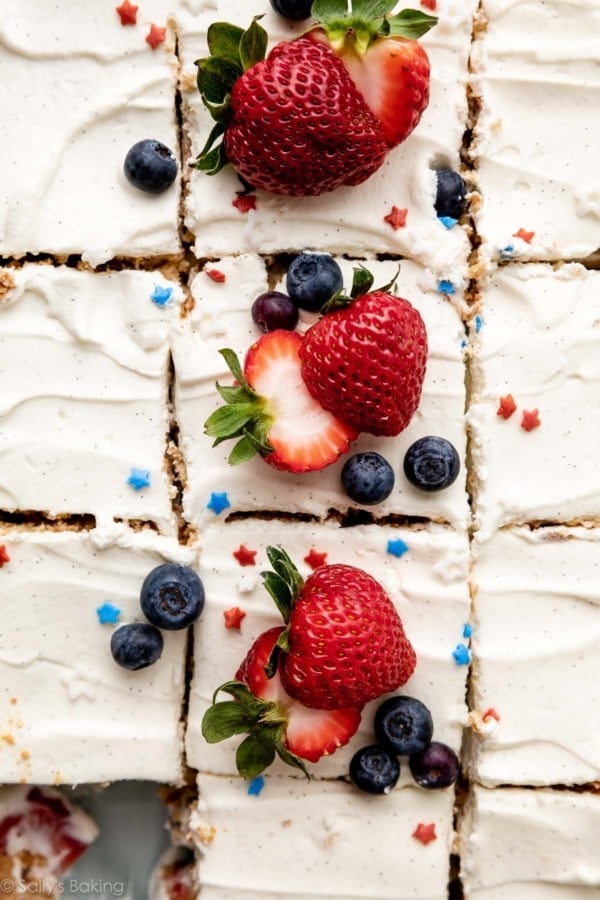










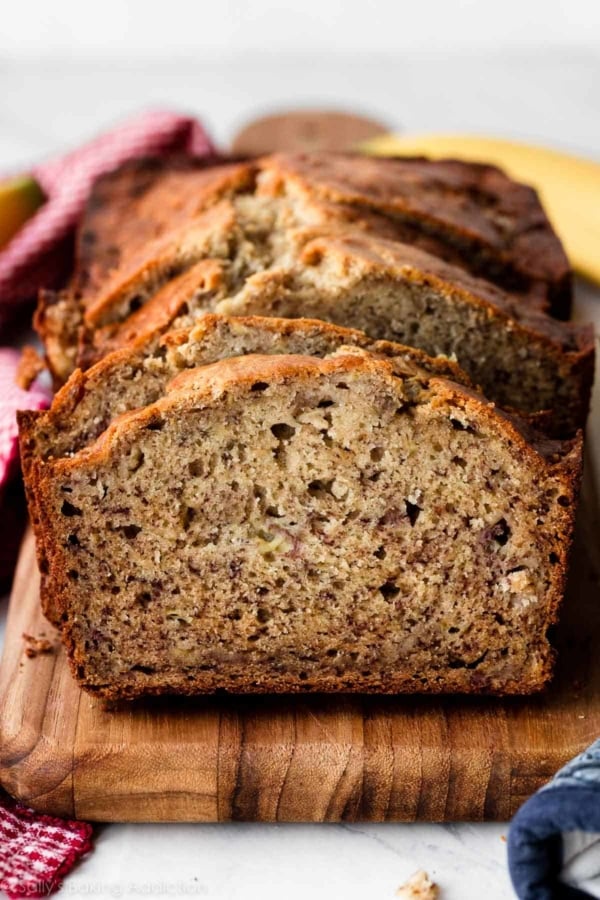

Reader Comments and Reviews
Hi Sally! I’ve made this pavlova multiple times (albeit with some tweaks) and it’s always such a hit! I want to try making 12 mini pavlovas with this (I can usually feed 12 with one recipe). I thought I’ll bake it for 15 mins since you say 35-40 mins for 6 minis. Would that work or would you recommend different timing?
Hi Namali, we’re unsure of the exact time needed, but that sounds right! Definitely keep on eye on them in the oven.
First try loved it, turned out perfectly. Second and third batches are questionable. And why are they making a popping noise only once fully baked and cooled?
hi! would it be possible to do this by hand? if so how long would this take and how would I go about this? thanks!
Hi T! Whipping the egg whites without a mixer would be quite tricky, but we’re sure you could do it, in theory! It would take a sturdy whisk and some arm muscle.
Hi Sally,
Love all your recipes. They are so easy to make and always a crowd pleaser.
If I need to make this for 12-15 people, should I increase the recipe to 1.5x ?
That should work fine, Maitree!
Great recipe, super easy. I think mine required a bit more than 90 minutes in the oven
My egg white look like marshmallow fluff after adding sugar
No peaks
My guess is u used commercial egg whites, rather than a white from fresh eggs. I have found commercial eggs whites great for an egg white scramble, but they never work for meringue
If you have even a DROP of egg yolk in the whites, OR your bowl or beaters are not COMPLETELY grease/oil free, the whites will not whip up properly. Wash bowl and beaters in hot soapy water and vinegar. Rinse then wipe with freshly washed towel or paper towel.
I just wanted to say that I love this recipe. I make it every Easter for our extended family get together. It’s so good with the lemon curd recipe you attached.
First of all, your recipes are amazing! I’ve had great success with the ones I’ve tried.
To make this recipe as smaller individual pavlovas, would the cooking time change or is it the same as a whole pavlova? I’m excited to try this! Thank you.
Hi Debbie, instructions for making mini pavlovas are in the Notes section, beneath the recipe. See note #6!
Where can I find the nutrition breakdown info?
Hi Jennifer, We don’t usually include nutrition information as it can vary between different brands of the same ingredients. Plus, many recipes have ingredient substitutions or optional ingredients listed. However, there are many handy online calculators where you can plug in and customize your exact ingredients/brands. Readers have found this one especially helpful: https://www.verywellfit.com/recipe-nutrition-analyzer-4157076
I’m 77 and got this recipe from my grandmother who called it ‘candy cake’ – she had us form the merangue into whatever cake chape we wanted on parchment paper…put into a 375 degree oven and turn the oven off leaving the cake [without peeking] at least 4 hours, preferably overnite…only works in an electric oven. With loads of whipped cream and fruit it was always a special treat,
I am going to give this a try.
Thank you!
Ever since I startwd watching Bluey, I really wanted to try Pavlova. When I found this recipe, I was shocked, and I immediately saved it on my computer! Pavlova is so good!
So easy to follow. Very good, very very sweet. I wonder what would happen if you cut the sugar? Probably nothing good. I made lemon curd and whipped cream and had fruits to fill it.
Hi Annie, Without the full amount of sugar in this recipe, the egg whites would deflate and you wouldn’t get the crisp exterior. We don’t recommend reducing the amount.
Alternative to the cream of tartar what will useing
Hi Victor, you can use 1 teaspoon white, apple cider vinegar, or even lemon juice in place of the cream of tartar.
Can you please do some other Australian recipes soon. Would love to see Anzac Biscuits, vanilla slice and Lamingtons.
I second this !! Haha
Hi. As soon as I put my first dollop of whipped cream on my pav, it collapsed. How can I prevent this?
Hi ttt, over whipping the egg whites can often cause the pavlova to collapse. An easy fix for next time!
Does the 90 minute bake time start when you put the pavlova in the oven, or once the temperature has gotten down to 200°?
Hi Margo, the 90 minutes begins when you place the pavlova in the oven.
I would like to make this for someone else that is corn, dairy, and gluten free. Can I leave the corn starch out? Any adjustments I would need to make? Also open to other desert ideas that are dairy, gluten, and corn free that others can also enjoy. I have gotten amazing reactions to this pavlova in the past.
Hi Amy, we haven’t tested this recipe with any cornstarch alternatives. Potato starch may be an option, but again, we haven’t tried it ourselves to know the outcome. It may be best to find a recipe specifically written to be corn-free. Let us know if you try anything! Or, here are our gluten free and dairy free recipes for browsing.
Does this recipe only make one layer? If I wanted to make multiple layers, would I just keep repeating the recipe?
Hi Mike! Yes, this recipe makes one layer. And you can certainly repeat it to make multiple layers.
Hi! Why is the total time 4hrs? I’m a bit confused. Is that because you’re leaving it to cool for a few hours in the oven?
Yes, the total time accounts for cooling.
Is super fine sugar any different than powdered / confectioners sugar?
Hi Chris, don’t use confectioners sugar. Pulse 1 cup granulated sugar a few times in a food processor.
I’m thinking of using monk fruit sweetener instead of sugar. Do you think that will work?
Hi Vicki, I wish we could help, but we don’t have experience baking with sugar subs like monk fruit sweetener, so aren’t sure of the results.
Hey! My pavlova deflated upon cooling, do you know why that could’ve happened and what can I do to prevent it?
Hi Niharika, pavlovas will fall. You can see ours deflated in the photos, as this leaves room for all of your toppings! Did yours fall more than what you see? (I know it’s hard to tell, but was it completely flat?)
Hi Sally! I made this about six months ago for my friend’s birthday and it was a huge hit. I want to make it again since I have a heap of egg whites left over from Christmas baking/cooking. Do you think the meringue would work with frozen and thawed egg whites?
Hi Namali, we haven’t tested this recipe with frozen and thawed egg whites. We’d love to know how it turns out if you give it a try!
It’s in the oven right now and seems to be fine. It took close to 12 minutes to get to stiff peaks after the sugar was added, but I think that may be due to high humidity and/or the fact that I was using a hand mixer. I’m also wondering, how do I tell if it’s done without opening the oven?
Planning to make this weekend. If I pulse 1 cup of regular sugar in the Food processor to make it superfine should I remeasure it to one cup?
Hi MCG, you shouldn’t need to, no. If you have a kitchen scale, weigh 200g of sugar and then pulse. 200g will still be 200g!
Omg! This was heavenly!!
Hi Sally why did my pavlova crack on the sides
Cracks and bumps are normal for pavlova. You can help avoid too many cracks by cooling the pavlova in the oven. The sudden change of temperature (inside the oven to outside the oven) shocks the pavlova, so it’s best to cool inside the cooling oven.
Can I substitute meringue powder anytime I see whipped egg whites as an ingredient?Pavlova? Pavlova cookies?
Hi Sheryl, we wouldn’t recommend it, no.
I’ve used Commercial meringue powder -Wilton Brand in the US- and it works just fine. The advantage is that it is pasteurized and it’s always on hand in the pantry. I mix 2 teaspoons full with 2 tablespoons full of water, starting with a small amount to form a paste and then adding the rest of the liquid. This brand also contains some cream of tartar to help stabilize the foam it whips into a meringue just fine.
Sally, I plan to make this for Thanksgiving this year & am really excited to try it! I have powdered citric acid that I have used for canning – do you think this would be a reasonable alternative to vinegar or cream of tartar?
Hi Marie, we haven’t tested this recipe with powdered citric acid so are unsure of the results. I’m sorry we can’t be of more help, but if you try it, please let us know how it turns out!
I have made this recipe countless times now, full size and minis. It is the absolute best ever. We have a huge family, this is a recipe that everyone loves(I use so many of your recipes and they are all hits)! Thanks so much
Hi Sally, I’m wondering if I could use egg whites from a carton for this recipe? If so, how many grams would you use for it? Thanks so much!
Hi Lauren, We’ve never tried it, but from what we’ve read it’s completely fine. Let us know if you do! There should be instructions for amounts on the carton.
In regards to egg whites from a carton: It says on the carton that you should not use them for a meringue since they are pasteurized and do not work well.
I used egg whites from a carton and it worked well.
VERY true!
They do not work from a carton! I made 3 attempts, and they did not work. It has always worked perfectly with fresh egg whites before and after my attempt with a carton